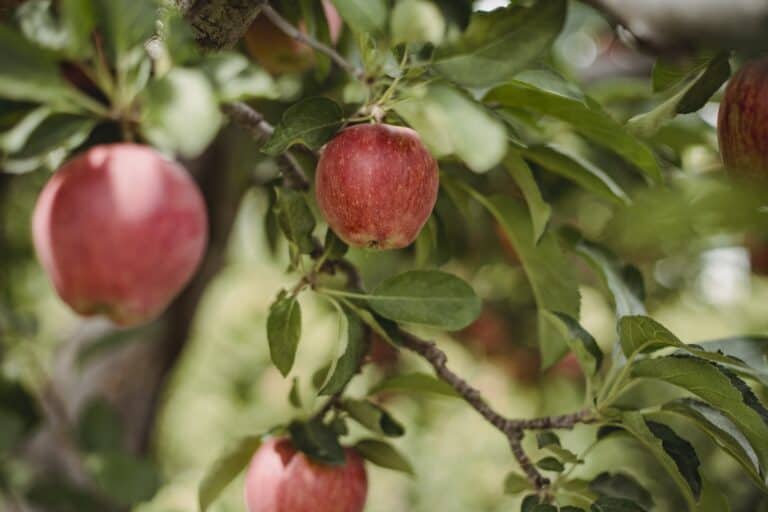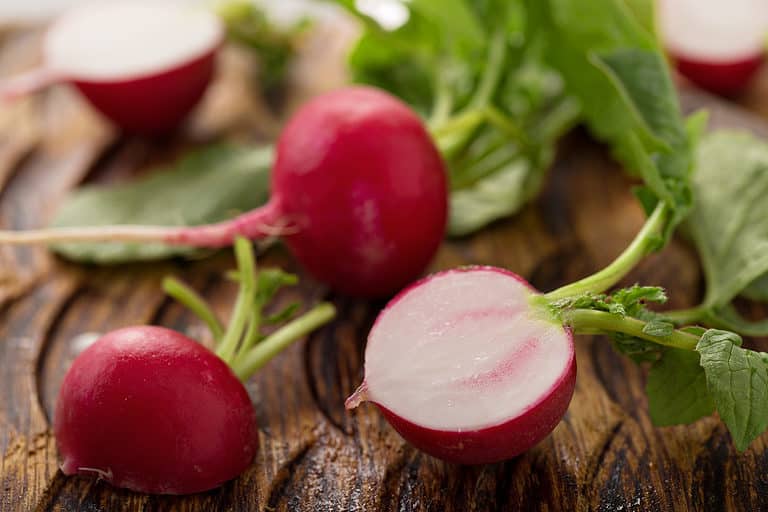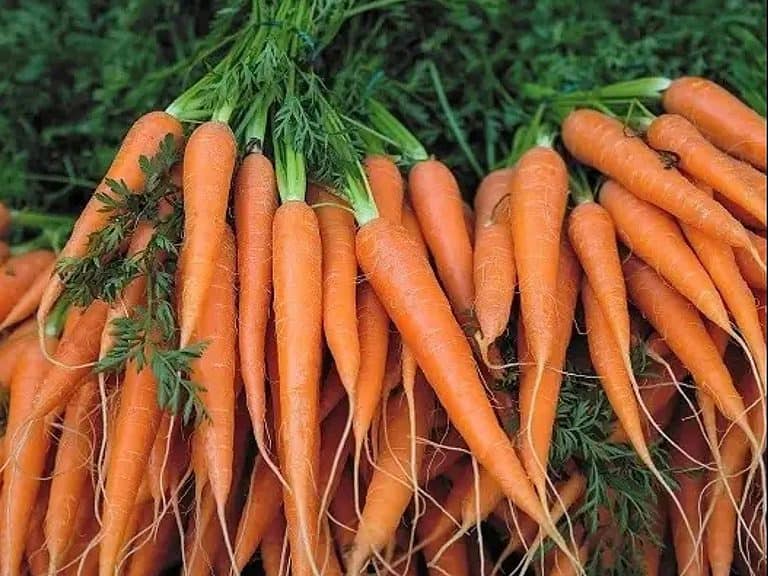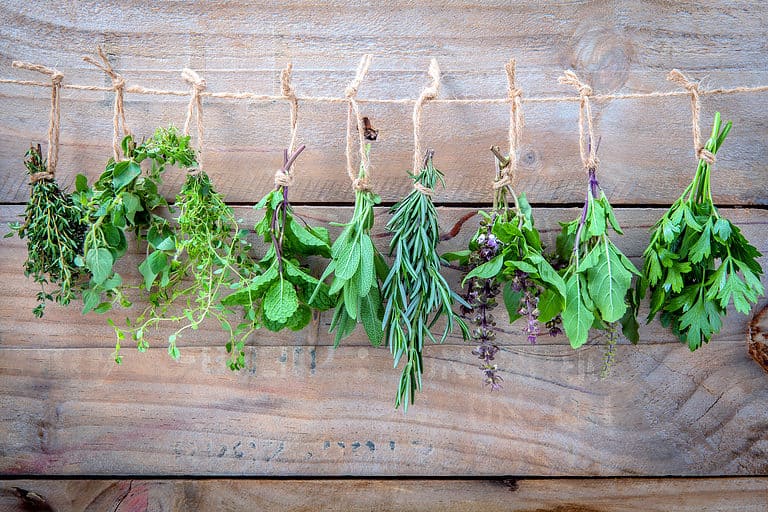Rotating Crops: Best Practices and Strategies for Success

Curious about the significance of crop rotation and the methods for implementing it proficiently? The practice is crucial in preserving soil health and controlling pests. This guide will walk you through the fundamental principles of crop rotation, outline its advantages, and provide steps to establish an effective rotational strategy for your crops.
Key Takeaways
Crop rotation improves soil health by alternating different crops, preventing nutrient depletion and pest build-up, and can involve various crops depending on soil and market conditions.
Grouping plants by family optimizes crop rotation, as it manages plant-specific pests and nutrient requirements, enhancing agricultural efficiency and soil fertility.
Utilizing modern technology, such as apps and satellite monitoring, enhances crop rotation planning by providing data for informed decision-making and real-time field management.
Understanding Crop Rotation

The practice of crop rotation entails the deliberate sequencing of various crops on the same plot of land with an aim to improve soil health and regulate nutrient concentration. This approach helps avoid the exhaustion of the soil, sustains a balanced provision of nutrients, and bolsters overall soil fertility.
To this, implementing a system where different crops are rotated mitigates the risk posed by pests and diseases. As a result, it contributes to producing healthier crops and enhances their potential yields.
What Is Crop Rotation?
Crop rotation practices involve the practice of crop rotation of planting various crops on the same piece of land during different growing seasons. This method helps maintain soil health and prevents pest buildup. This rotation cycle can involve anywhere from two to twelve different crops, each selected to avoid pest problems and improve soil health.
Alternating different vegetable families in the same garden space helps prevent pest and disease buildup, a common issue with repeated cultivation of the same crops in one area. Heavy feeders like corn, lettuce, and tomatoes are rotated with light feeders such as carrots and potatoes to balance nutrient use.
Rotating a vegetable or vegetable family every 3 to 4 years is ideal for maintaining soil health.
Benefits of Crop Rotation
Monoculture practices can lead to the exhaustion of nutrients in the soil and increased susceptibility to pests and diseases. In contrast, crop rotation entails alternating various crops sequentially, which enhances food production within a limited area while concurrently nurturing the health of the soil.
Incorporating legumes such as peas and beans into crop sequences naturally enriches the soil with nitrogen, thereby boosting its fertility. Alternating high-nutrient-demanding plants like tomatoes with less demanding ones such as parsnips helps maintain equilibrium in soil nutrient content. An adeptly devised crop rotation system accomplishes not only the cultivation of necessary crops for economic gain, but also promotes robustness in soil quality—establishing itself as an essential component of prudent farm management strategies.
Grouping Plants by Family
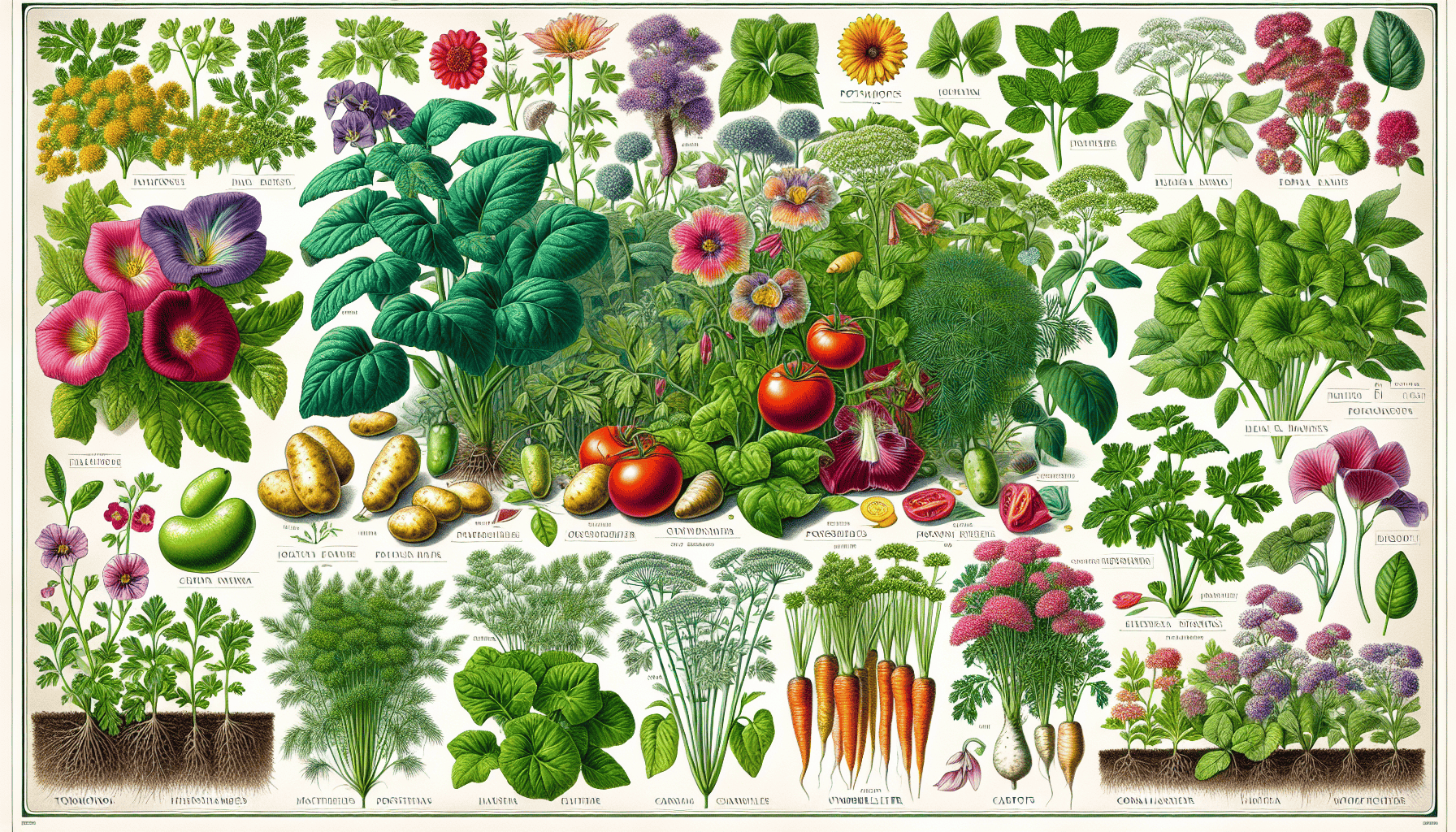
Effective planning for crop rotation necessitates organizing annual vegetables according to their plant family, as this strategy aids in the control of pests and diseases common to similar crops while also addressing maintenance demands. By tailoring care to the unique traits and needs of distinct plant families, one can foster more robust crops and optimize resource utilization.
Identifying Plant Families
Understanding the classification of plant families plays a pivotal role in devising a successful crop rotation strategy, which is essential for maintaining soil health and managing pests effectively. The key crop families that are integral to this process include legumes, brassicas, nightshades, corn, wheat, and cotton.
For instance, within the nightshade family—which encompasses crops like tomatoes, peppers, eggplants and potatoes—there exists commonality in terms of their characteristics and requirements. Recognizing these groupings by their family names often ending with ‘aceae’, aids farmers to orchestrate rotations that mitigate the exhaustion of nutrients from the soil as well as prevent pest accumulation while ensuring crops access consistent nutrients.
Importance of Plant Families in Crop Rotation
The nutrient needs for different plant families vary, which influences the best crop rotation practices. For example, legumes are beneficial in that they replenish nitrogen in the soil through their ability to fix atmospheric nitrogen, thereby providing a positive impact on crops planted afterward. If one type of crop is cultivated repeatedly in the same location, it can lead to a depletion of specific nutrients from the soil. Strategic rotation of plant families is crucial.
Rotating plants based on family helps break pest life cycles because many plants within a single family tend to be vulnerable to similar pests. By carefully managing these plant families within an established rotation scheme, infestations can be controlled more effectively. A well-designed crop rotation strategy uses knowledge about various plant families with an aim not only at reducing pest and disease threats but also at enhancing overall soil quality.
Planning Your Crop Rotation System
Understanding plant families and their effects on soil fertility is crucial prior to embarking on crop rotation. When organizing your crop rotations, it’s important to take into account the conditions of the field as well as which crops will be part of the process, adhering to a recommended minimum three-year rotation cycle.
Savvy farmers weigh market opportunities against biological factors in the fields when formulating efficient rotational plans. Although diversity in choosing crops is advantageous, preserving equilibrium is essential for enhancing both soil health and its productive capacity.
Advanced agricultural technologies can ease the intricate chore of devising crop rotations by providing vital information needed for proficient oversight.
Creating a Crop Rotation Plan
Formulating a plan for crop rotation requires maintaining logs of your plantings, along with their timings. Begin by drawing a layout of your garden and documenting the various crops based on their botanical families. Recognizing the familial ties among plants is important as it has significant implications on soil health and controlling pests.
Embarking initially on smaller pilot plots may be beneficial in evaluating how various cover crop species perform before applying them more extensively. The success of these crops hinges greatly upon appropriate timing. Select species are better suited for autumn whereas some flourish in spring conditions.
Employing satellite analytics can offer valuable insights into how alternating sequences of different crops influence overall field vitality over extended periods. This data can then guide refinements in strategies for future planting endeavors to enhance efficacy and outcomes.
Record Keeping for Crop Rotation
Keeping precise documentation of planting times and the varieties of crops is crucial for gauging the success of crop rotation strategies. Such records facilitate an analysis of trends over various seasons, which helps improve decision-making processes for subsequent planting periods.
Farmers can benefit from satellite surveillance technology to obtain retrospective data on crop rotation, which assists in forecasting prospective yields when looking into acquiring new agricultural fields.
Enhancing Soil Health Through Crop Rotation
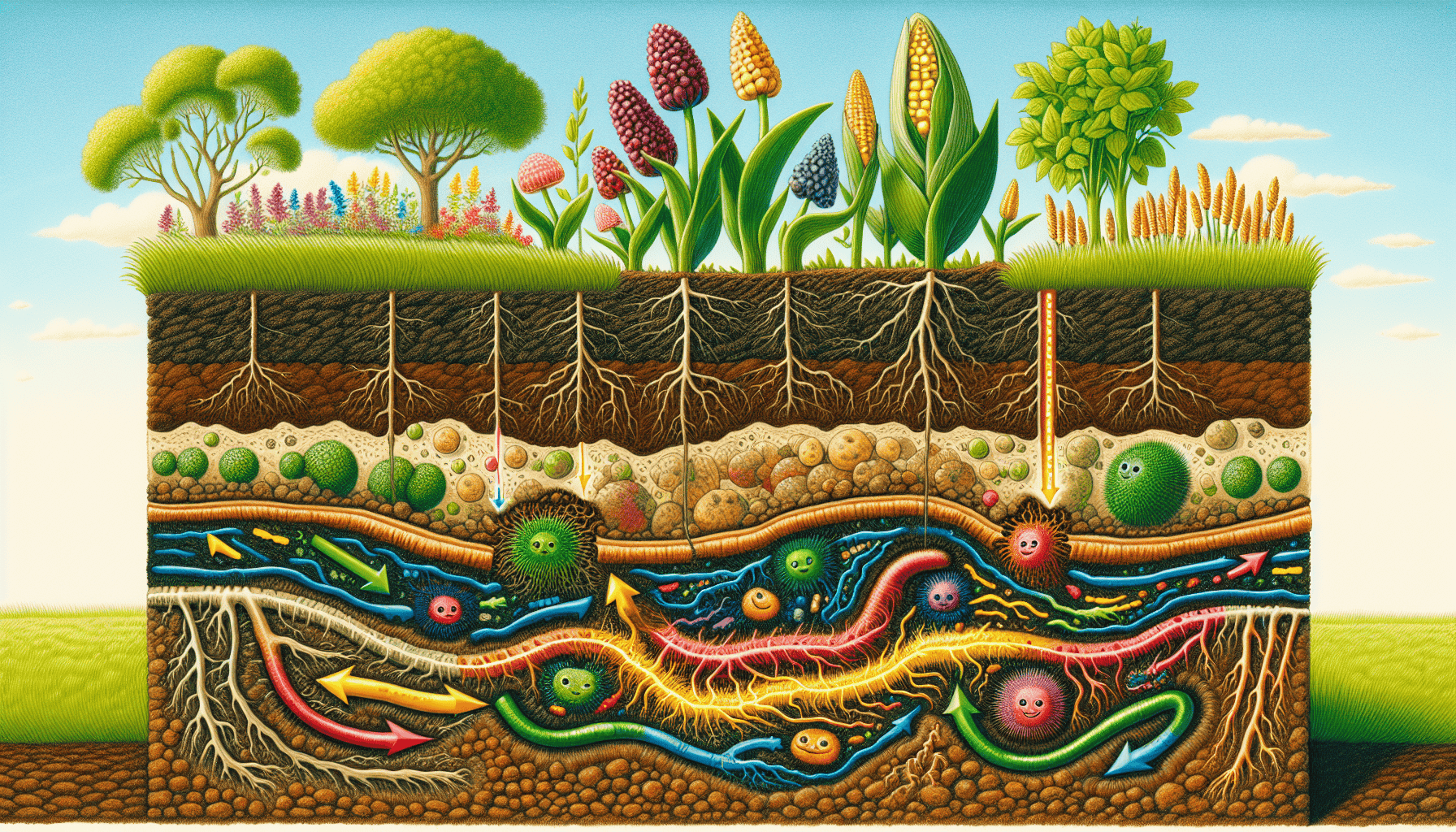
By alternating the planting of different types of crops, such as grains and legumes, crop rotation helps replenish vital nutrients and enhances the soil’s structure. A system based on crop rotation also minimizes input expenses while promoting soil health over an extended period.
Intricate rotations that span multiple years involve diverse plant species which optimize soil health benefits and foster ecological diversity. The inclusion of cover crops within a rotational plan ensures continuous living roots in the ground, markedly improving both soil structure and health.
These methods decrease pest numbers and control diseases by bringing non-host plants into contact with the soil.
Improving Soil Structure
Incorporating a rotation of crops possessing varying root depths can augment the porosity of soil, thus improving its capacity for water and nutrient circulation. Deep-rooted crops forge pathways that promote the penetration of air and moisture within the soil. Utilizing various species of cover crops with intentionality serves to bolster soil structure, advance nutrient recycling, and combat erosion.
The choice in cover crop should align with defined objectives like enhancing overall soil health or boosting nitrogen fixation, taking into account local environmental conditions as well.
Boosting Soil Organic Matter
By rotating crops, the composition of nutrients in the soil is enriched due to a boost in organic matter. This practice contributes to soil health by replenishing nutrients that might have been diminished through consistent cultivation of the same crop.
Incorporating a variety of crop residues as part of a rotational strategy helps regulate both organic matter and nutrient access, which promotes sustained productivity and health of the soil over time.
Managing Pests and Diseases
By interrupting the life cycles of pests and diseases, crop rotation hampers their proliferation and curtails infestations. Organizing crops according to plant families can regulate shared pests because distinct families tend to draw different types.
Incorporating a variety of crops in elaborate multi-year rotations boosts agrobiodiversity while severing pest life cycles. Alternatively, even simple biennial rotations are capable of disrupting the continuity of pest generations effectively diminishing their numbers.
Specific crops engage in competition with weeds for vital resources, which mitigates weed propagation and lessens dependence on chemical herbicides. Successful implementation of crop rotation substantially improves pest control measures and fosters more robust crop health.
Interrupting Pest Life Cycles
By altering the placement of crops, crop rotation hinders the continuity of pest life cycles by eliminating their preferred hosts. This repositioning can make it challenging for pests that have survived through winter to locate a food source come springtime, effectively breaking their lifecycle and diminishing their numbers.
The technique proves especially beneficial in controlling organisms such as cabbage moths, which are known to be voracious consumers. Consequently, crop rotation is an essential strategy in the successful and sustainable management of crops.
Reducing Disease Pathogens
Rotating crops can mitigate the accumulation of diseases that are borne by soil. Given time, certain pathogens in the soil may perish, thus it is crucial to delay replanting a similar crop type where one has previously grown.
It is advised to wait for a period of four years before reusing a plot for planting the same kind of crop. This interval helps in reducing concentrations of harmful pathogens and contributes to cultivating more robust crops.
Types of Crop Rotations
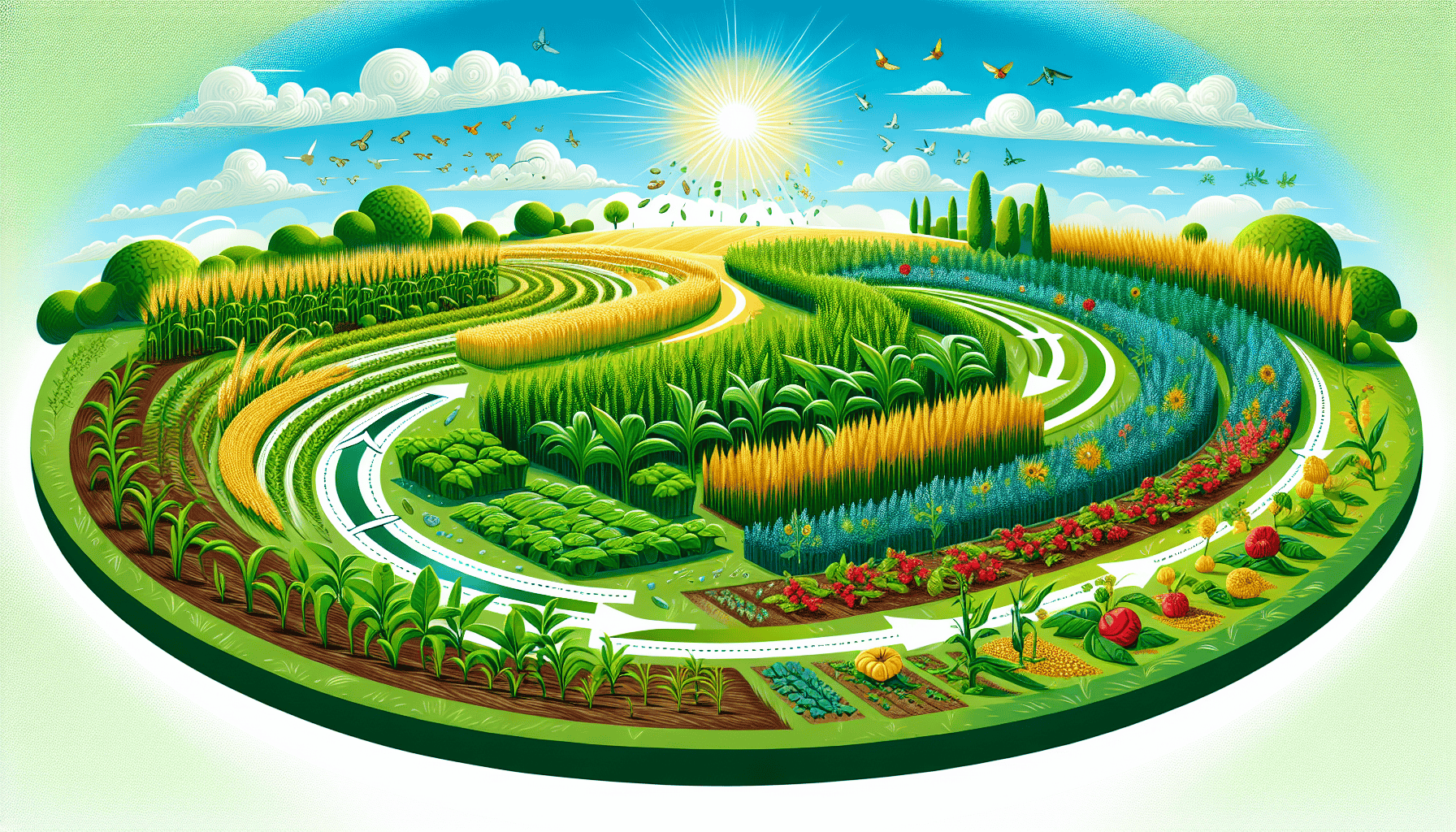
Various classifications of crop rotation systems exist, from straightforward biennial rotations to intricate multi-year arrangements. Such practices may incorporate as few as two crops or involve complex sequences with numerous different crops. These approaches enhance farm biodiversity and have positive impacts on soil health, while also fostering populations of beneficial insects.
Simple Two-Year Rotation
Alternating various crops annually on the same plot as part of a two-year crop rotation can boost soil health and help control pests. In this practice, one type of crop is sown during the first year and replaced by another in the subsequent year to optimize resource use.
By adopting a two-year rotational strategy, improvements can be seen in soil structure and fertility, along with increased nutrient accessibility. It helps mitigate issues related to pests and diseases.
Complex Multi-Year Rotations
Intricate rotation strategies spanning multiple years may include as many as twelve distinct crops, promoting a varied planting approach that augments soil fertility incrementally. Adaptable to the unique circumstances of each farm, these systems can vary from elementary dual-crop rotations to elaborate schemes involving numerous plants across extended periods.
The integration of a variety of crop species and additional plant types is pivotal for optimizing the advantages to soil health and fostering greater biodiversity.
Integrating Cover Crops

Primarily cultivated to manage agricultural systems and enrich the soil, cover crops serve an essential function in crop rotation. By increasing nutrient accessibility, controlling weed growth, and contributing organic matter to the soil, these crops are vital for maintaining soil health.
It is important when selecting which cover crops to plant that considerations are made regarding the type of soil they will be grown in as well as the climate conditions present and compatibility with future rotational crops planned.
Benefits of Cover Crops
Utilizing cover crops as part of a crop rotation can markedly improve the amount of soil organic matter and foster advantageous microbial activity. These crops heighten soil fertility through their uptake of surplus nutrients, which in turn may result in elevated yields for future crops. They also contribute to an increase in biodiversity within the soil ecosystems, creating more robust conditions for growing crops.
Consistently integrating cover crops into agricultural rotations contributes to a rise in organic matter present within the soil, which enhances both microbial proliferation and the cycling of nutrients.
Choosing the Right Cover Crops
It is essential to choose cover crops that are well-suited to the local weather and soil characteristics in order to optimize their advantages and make sure they work well with principal economic crops. The primary function of the cover crop, whether it’s for fixing nitrogen or controlling erosion, should inform which species is chosen.
For instance, planting mustard greens as a cover crop can be effective in weed suppression, while using the remains of sweet corn as a crop residue can improve the structure of the soil.
Addressing Challenges in Crop Rotation
Issues including restricted area, nutrient regulation, and managing pest populations can present challenges to the implementation of crop rotation, necessitating tailored strategies for its successful execution. Often times farmers must modify their plans for rotating crops in order to navigate unforeseen obstacles such as fluctuating weather conditions and the emergence of pests or diseases.
Certain pests are capable of creating robust formations that endure within the soil over time, making it necessary to extend crop rotation periods with the aim of diminishing their effects.
Dealing with Limited Space
Partitioning a modest-sized garden into four distinct sections can aid in executing crop rotation, allowing various plant families to inhabit the same plot only once every four years. Utilizing containers for crops provides additional agility for rotating plants within limited gardening spaces.
In small-scale garden management, it’s essential to employ smart tactics that make the most out of constrained space while practicing crop rotation effectively.
Managing Crop Failures
Agriculturists frequently modify their crop rotation strategies following setbacks, often substituting failed crops with cover crops or alternative cash crops. It is vital to keep an eye on factors like soil moisture and pest populations in order to implement prompt changes throughout the growing season.
Seasoned farmers highlight the necessity of devising backup plans for unforeseen problems, which includes being ready to switch out failing seeds for quicker-maturing types to offset early losses in crop production.
Utilizing Technology for Crop Rotation
Contemporary advancements in technology are improving the planning process for crop rotation, empowering farmers to perfect their systems by utilizing data analysis and monitoring field conditions.
In devising an effective strategy for rotating crops, factors such as labor, equipment availability, and the configuration of fields should be taken into account. The evolution of artificial intelligence and large-scale data analytics is expected to revolutionize these practices even more in times ahead.
Online Tools and Apps
AgriXP is an accessible web-based application designed for farmers to safely document their field information and operations. Numerous online systems provide functionalities enabling growers to graphically manage their sowing timelines and evaluate the progression of diverse crops over periods. Features incorporated in the AgriXP app include crop scheduling, financial planning, and analysis of anticipated earnings from varying crop possibilities.
Such applications enhance interaction between cultivators and agronomic specialists, promoting immediate counsel on crop rotation tactics. Leveraging digital resources augments decision-making processes which can boost harvests and economic gains for farmers.
Satellite Monitoring
Real-time satellite imagery enables farmers to observe field conditions promptly, thus improving the scheduling of crop rotations. By detecting problems such as pest infestations or drought at an early stage, this technology facilitates timely modifications in crop rotation schedules that can boost soil health and increase overall productivity of crops.
Summary
Crop rotation is not merely a technique of agriculture, it’s an enduring strategy that improves soil vitality, controls pests and diseases, and elevates the production of crops. This guide has offered a detailed examination from fundamental concepts to the inclusion of cover crops as well as applying advanced technology for fruitful crop rotation. Through these practices’ adoption, agriculturists can guarantee prolonged productivity and fertility of their soil, setting the stage for abundant yields ahead.
Frequently Asked Questions
What is crop rotation?
The agricultural technique of crop rotation, which entails successive planting of various crops on the same plot across different seasons, significantly enhances soil health and regulates nutrient content.
Not only does this method elevate soil fertility, but it also contributes to the management of pests and diseases.
Why is it important to group plants by family in crop rotation?
Grouping plants according to their family is a key aspect of crop rotation, which significantly aids in the control of pests and diseases, as well as streamlines maintenance demands.
Implementing this approach results in more robust crops and an enhanced utilization of resources within the agricultural sector.
How do cover crops benefit soil health?
The incorporation of cover crops plays a vital role in bolstering the health of soil, as they contribute to increased nutrient availability, augment the organic matter content, and foster beneficial microbial activity within the soil.
These crops are highly efficient at inhibiting weed growth, which aids in maintaining an overall healthier ecosystem for the soil.
What challenges might farmers face with crop rotation, and how can they address them?
In addressing challenges like nutrient management, limited space, and pest control associated with crop rotation, farmers can mitigate these issues by partitioning their fields, making use of containers for cultivation, and devising contingency plans to cope with potential crop failures.
How does technology enhance crop rotation practices?
Utilizing data analysis and satellite monitoring, technology greatly augments crop rotation practices. This optimization of systems facilitates better decision-making and results in increased yields for crops.

